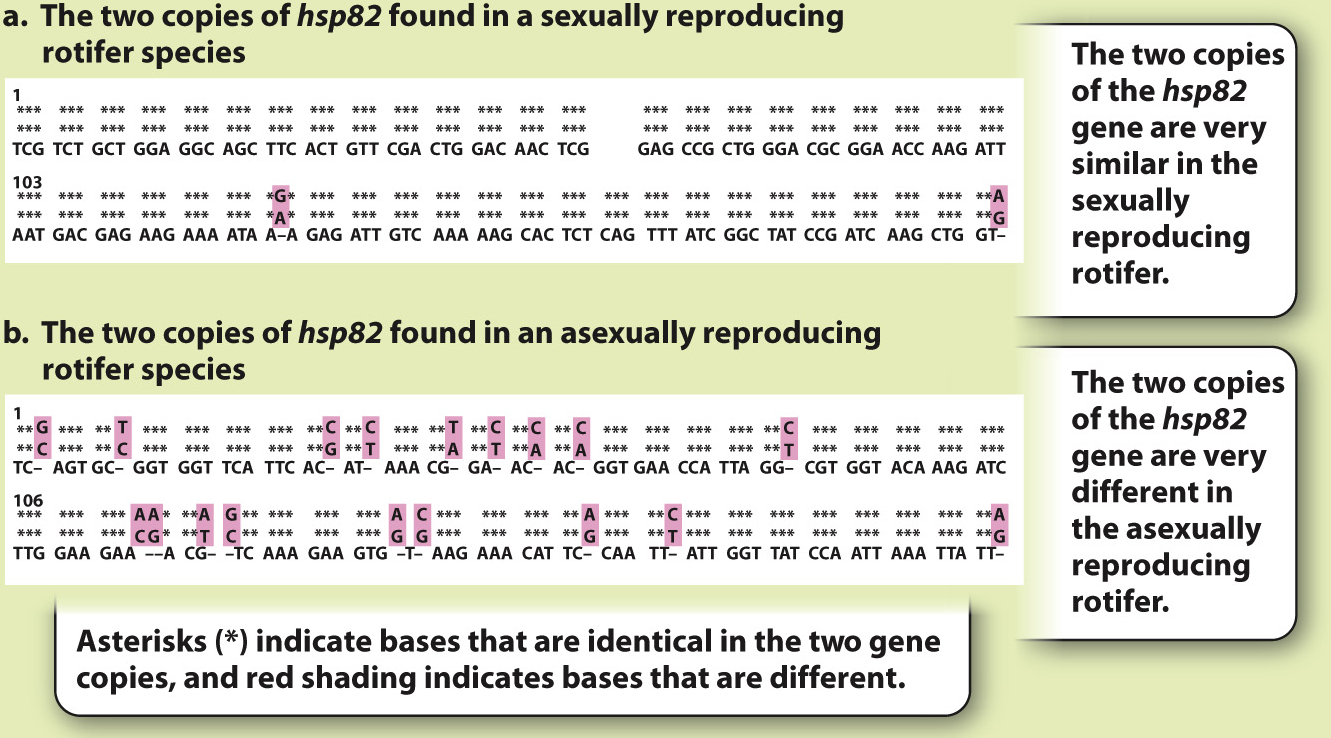HOW DO WE KNOW?
FIG. 42.6
Do bdelloid rotifers reproduce only asexually?
BACKGROUND Many groups of animals reproduce asexually, but most of these organisms reproduce sexually at least some of the time. The bdelloid rotifer, one of several species of microscopic aquatic animals called rotifers, may be an exception.
OBSERVATION All bdelloid rotifers found to date are females. No males or hermaphrodites (organisms with both male and female reproductive organs) have ever been observed. Meiosis has never been documented.
HYPOTHESIS Bdelloid rotifers are asexual and reproduce solely by parthenogenesis, in which unfertilized eggs develop into adult females.
PREDICTION In the absence of meiosis, the two copies (alleles) of a gene do not recombine, and mutations that accumulate are not reshuffled between them. As a result, two alleles of a gene in an asexually reproducing organism will show a much higher degree of sequence difference compared with two alleles of a gene in a sexually reproducing organism.
RESULTS Below is the sequence from the two copies of the hsp82 gene in a sexually reproducing rotifer species (Fig. 42.6a) and an asexually reproducing rotifer species (Fig. 42.6b). As can be seen, the two copies are similar in Fig. 42.6a but very different in Fig. 42.6b.

CONCLUSION The evidence from this experiment suggests that bdelloid rotifers are exclusively asexual.
SOURCE Welch, M. D., and M. S. Meselson, 2000. “Evidence for the Evolution of Bdelloid Rotifers Without Sexual Reproduction or Genetic Exchange.” Science 288 (5469):1211–